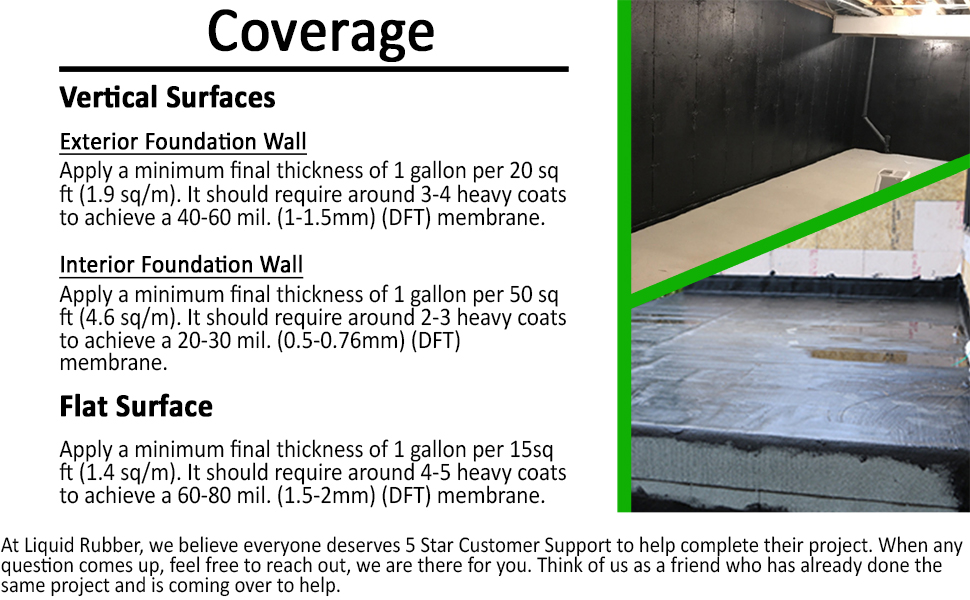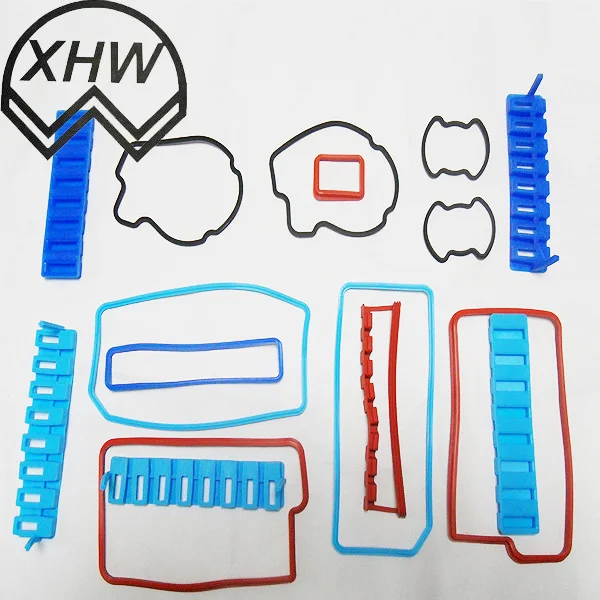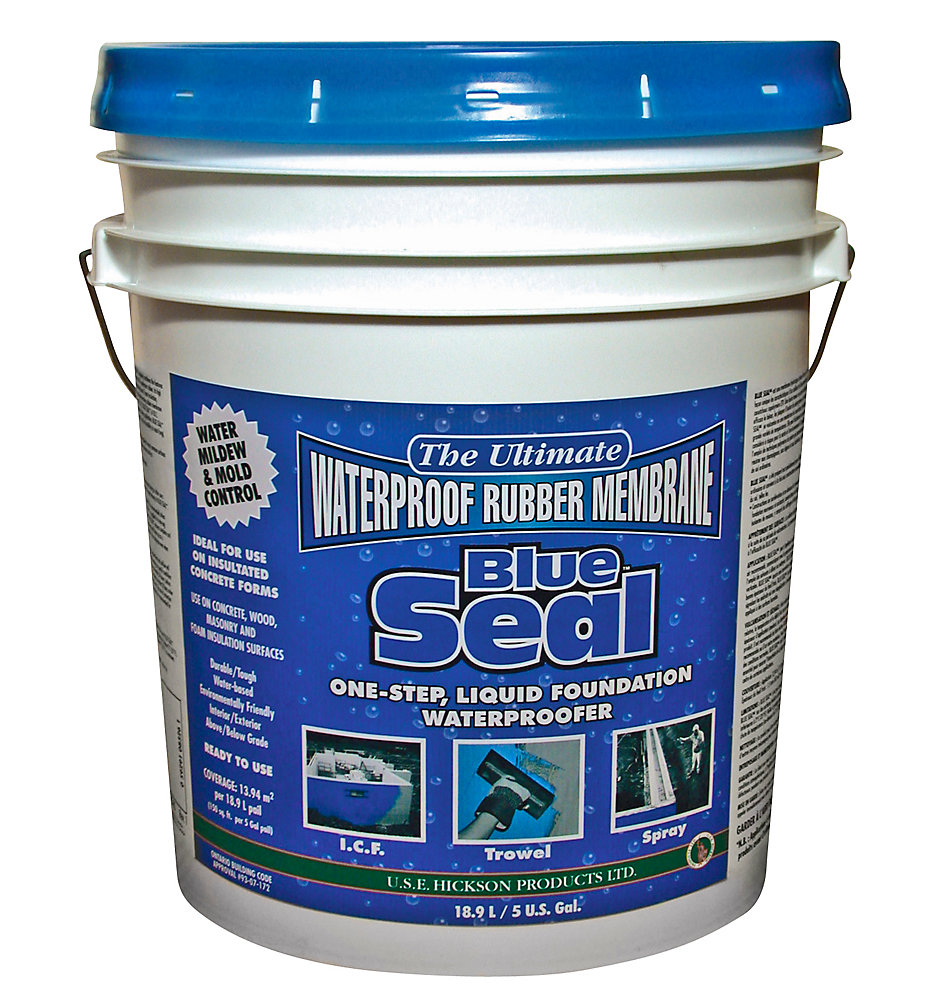Buy Blue Seal Waterproofing Rubber Membrane. Available online at Vella.ca. Ames® Blue Max® outperforms isocyanate urethanes, and works well as a primer and waterproofing membrane for Ames® products such as Ames® Safe-T-Deck®, Ames® Snow Seal®, Ames® Maximum-Stretch®, Ames® Block & Wall® Liquid Rubber, Ames® Block & Wall® Acrylic, Ames® Iron Coat® and many other coatings.
- Blue Seal Waterproofing Rubber Membrane Installation Material
- Blue Seal Waterproofing Rubber Membrane Installation Video


7 step foundation waterproofing

Foundationwaterproofing.org's preferred method of waterproofing foundations is second to none. While many foundation companies propose solutions that encompass some of the steps that are covered here, most do not implement the 7 step process that makes this the best available solution for damp or wet basements.
To make and keep your basement dry, look for the following 7 Steps:
- Excavate and power wash foundation
- Repair any damage to foundation and apply two coats of parging
- Add a footing bevel where the foundation wall meets footing
- Apply AquaBloc primer and apply BlueSkin waterproof membrane
- Apply Platon Membrane
- Install new weeping tile
- Backfill and grade property away from foundation.
Step 1 - Foundation Excavation Starts the Waterproofing Process
A combination of machine and hand digging allows access your foundation to begin the waterproofing process without any risk of damage to the foundation. Your contractor must excavate all the way to the footing to examine the existing drainage and the condition of the foundation wall and footing. Once the excavation is complete, power-wash the foundation to remove all loose materials and examine the foundation for damage.
Blue Seal Waterproofing Rubber Membrane Installation Material
Step 2 - Repair and Parge Foundation
Depending on the condition of the foundation, this step may vary. If there is any substantial damage to the foundation it will have to be repaired. After any damage is repaired, the contractor should apply 2 coats of parging. The parging provides damp-proofing and provides a foundation for the additional waterproofing layers.
Step 3 - Add Footing Bevel to the Foundation for Better Waterproofing

In addition to parging the foundation, ask the contractor to apply a bevel of concrete at the joint where the foundation meets the footing. This helps to seal up one of the most vulnerable parts of the foundation. This seam is often the source of water getting into basements.

Blue Seal Waterproofing Rubber Membrane Installation Video
Step 4 - Install Blueskin Waterproof Membrane
Blueskin is a rubberized asphalt membrane laminated to a Polyethylene film. This combination provides a durable, waterproof barrier that is tough and flexible and can stretch to continue providing protection even if new cracks develop after the membrane has been applied.
After the parging layers have dried, a primer is rolled on and then the Blueskin applied over the primer. The priming layer provides the perfect surface for the Blueskin to adhere to and provides a small amount of damp-proofing on its own. Remember, the Blueskin is providing waterproofing not just damp-proofing.
Step 5 - Add a Protective Platon Membrane
After the Blueskin, the foundation should be wrapped in Platon Membrane which provides the first defense against water and provides physical protection to the Blueskin membrane. Platon Membrane is a tough, dimpled, 24-mil high-density polyethylene wrap that seals out water. The dimples provide an air gap behind the Platon so that any water that might get behind the membrane can drain down and won't be trapped between the Platon and the Blueskin.
Step 6 - Install New Weeping Tiles for Better Drainage
The next 2 steps in ensuring a dry basement are perhaps the most important: proper drainage and grading. It essential that when water flows down the Blueskin and Platon membranes that there is a system in place to carry the water away from the foundation. The age of your home will often determine the drainage solution that is available for your foundation. You may be connected to the city storm drain, a French drain on your property or to a sump pit in your basement. However, regardless of drainage solution, your contractor shouldl lay a new bed of gravel at the footing, install new window wells and drains if required, install new weeping tile and connect it to the drainage. The weeping tile has a “sock” that covers it to help filter out silt so that the pipe does not clog as quickly over time. Finally the new weeping tile is covered with clear gravel so that water can drain easily through it.
Step 7 - Proper Grading in the Important Final Waterproofing Step
After the waterproofing steps are completed, the excavation around the foundation is backfilled and graded so that there is sufficient slope around the house to encourage water to run away from the foundation. Keeping water from getting to the foundation is the first line of defence in keeping a dry basement.
7 Steps to a Dry Basement
By executing these 7 steps, you will have the best solution for a dry basement. Waterproofing your foundation is a significant undertaking and investment and you want to be confident that the work is done right and that the result will be a dry basement.




